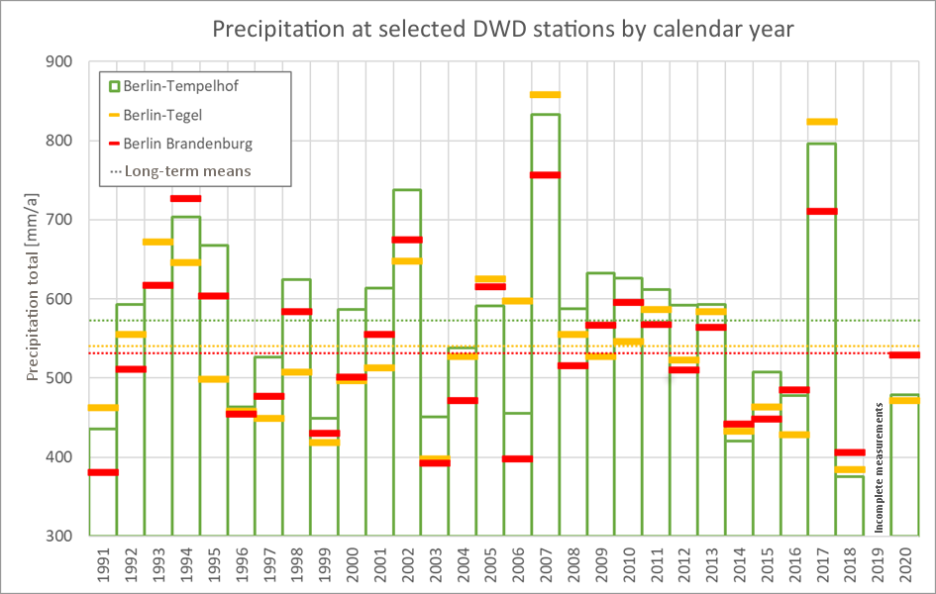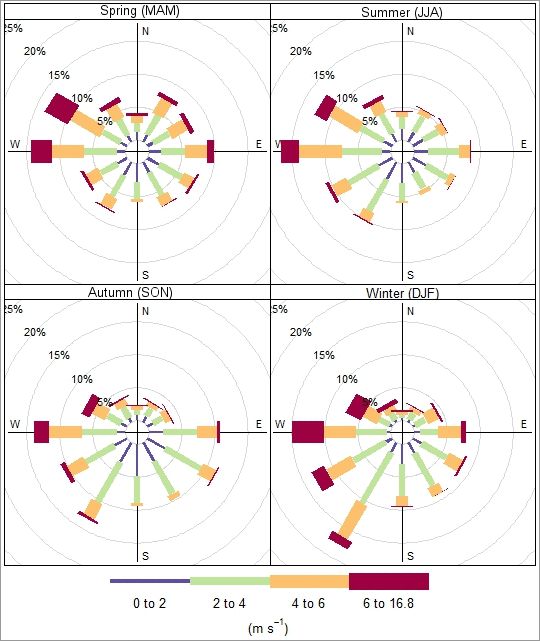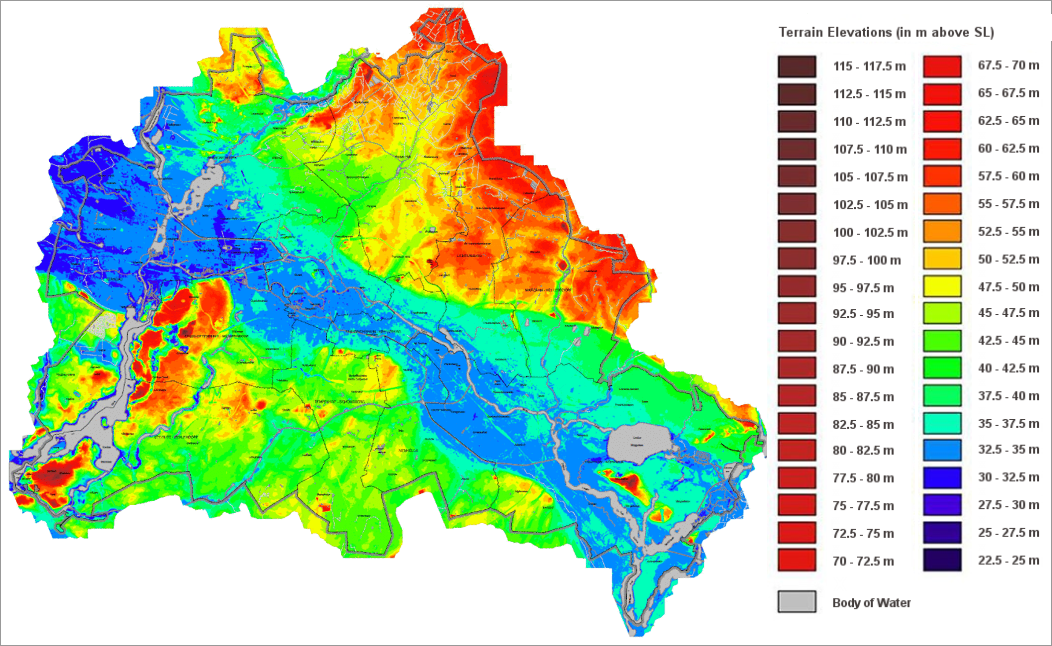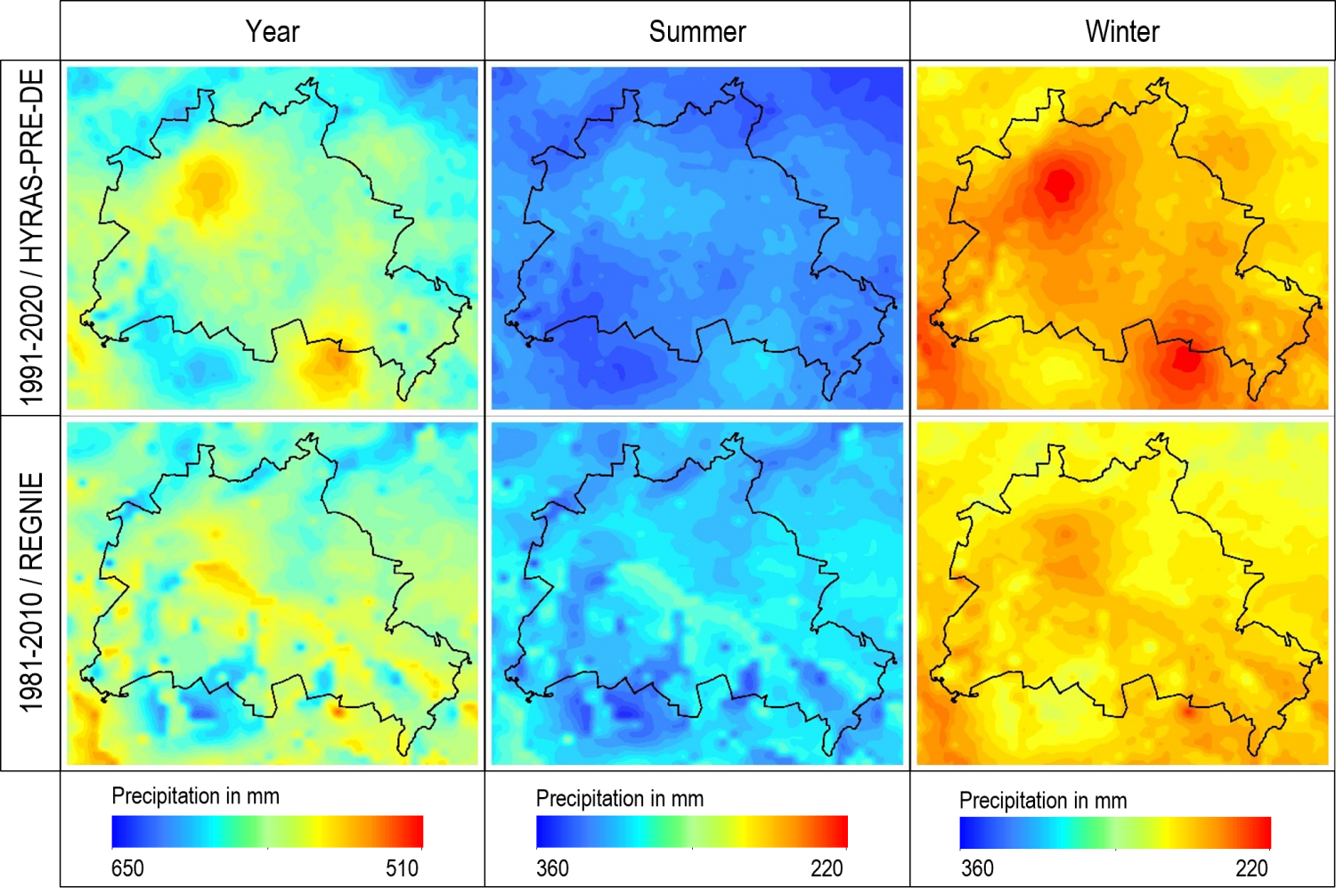The maps present the total precipitation averaged over the period from 1991 to 2020 according to water years (hydrological years, discharge years). A water year ends in October of the year in its title; it begins, however, in November of the year prior to that. The evaluations for the water years from 1991 to 2020 thus refer to the period from November 1, 1990 to October 31, 2020.
In addition, the totals for the winter and summer halves of the water year are also presented. Table 1 displays the evaluation periods.
| Tab. 1: Evaluation periods for the long-term mean precipitation distribution, 1991-2020 | |||
| Map | Evaluation period | Month | Period |
|---|---|---|---|
| 04.08.1 | Annual precipitation | November – October | Nov. 1980 – Oct. 2020 |
| 04.08.2 | Summer half | May – October | May 1981 – Oct. 2020 |
| 04.08.3 | Winter half | November – May | Nov. 1980 – May 2020 |
Berlin’s mean annual precipitation totals for the period from 1991 to 2020 range between 539 mm and 618 mm, depending on the location, the mean of which is 581 mm (cf. Table 2). The annual precipitation is generally distributed homogeneously across the city with only a few deviations. Areas around the former Berlin-Tegel Airport and Berlin Brandenburg Airport stand out in particular for being considerably drier. Both locations contain DWD precipitation stations. Here, the long-term mean precipitation is distinctly lower compared to other stations nearby (e.g. Berlin-Tempelhof). For example, the mean long-term precipitation for the period from 1991 to 2020 (calendar years) is 540 mm at the Berlin-Tegel station, 534 mm at the Berlin Brandenburg station and 572 mm at the Berlin-Tempelhof station (cf. Figure 4). Due to the regionalisation procedure, the local station measurements impact a larger area (cf. Figure 2). A meteorological or technical reason for the deviating precipitation totals could not be identified.




